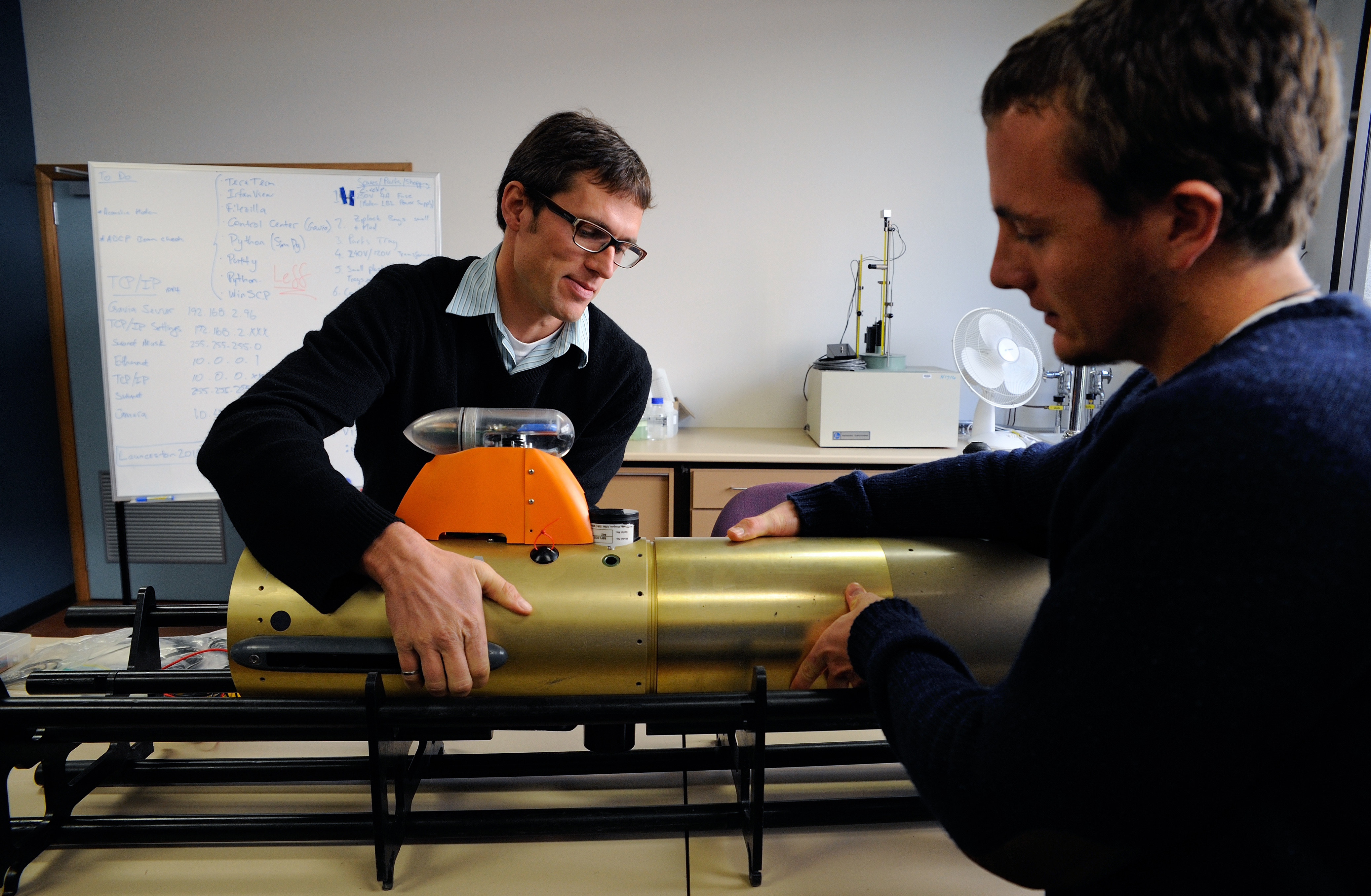

Located at the Australian Maritime College, a specialist institute of the University of Tasmania, the autonomous underwater vehicle (AUV) facility will house a fleet of robots able to be programmed to survey the ocean's depths and collect data on research missions.
This fleet includes UBC-Gavia and Mullaya, which are already based at AMC and used for various Defence and industry-partnered research projects, and the soon-to-be procured ARC Antarctic Gateway Partnership AUV – a next generation hybrid underwater robot capable of operating in extreme polar environments.
The new AUV is part of the $24 million Antarctic Gateway Partnership, Special Research Initiative of the Australian Research Council that aims to provide new insights into the role of Antarctica and the Southern Ocean in the global climate system.
AMC Principal Professor Neil Bose said the development would bring a range of social and economic benefits to the Launceston region.
"This is an exciting new development for AMC, the University and the state of Tasmania. It will be unique within Australia and one of just a handful of comparable facilities globally, allowing us to be on the cutting-edge of research in this field," Professor Bose said.
"Building our underwater robotic research capabilities not only enhances our reputation on the international stage, it also helps stimulate the local economy through the recruitment of specialist personnel and the use of a local architectural firm and other related industries."
Launceston firm Artas Architects were tasked with designing a facility big enough to house the Antarctic Gateway Partnership AUV, which will be up to 8 metres long, more than 1 metre wide and weigh about 3 tonnes. Building works are expected to be completed mid-2016 to coincide with the arrival of the new robot.
Overseeing the development of the new facility and the assembly of its fleet is a team of AUV engineers including Dr Alex Forrest and facility coordinator Peter King (Pictured).
"Our major focus for the next three years will be to procure and customise the Gateway AUV in readiness for deployment in 2018, the final year of the Antarctic Gateway Partnership project. Following that, we will then have the concentration of specialist equipment and personnel required to pursue other research projects," Dr Forrest said.
Five new staff members have been recruited to help run the facility, including lab manager Alfian Marzuki, who joins AMC from Indonesia, and facility coordinator Peter King who most recently worked as a computer engineer with the AUV facility at Memorial University in Newfoundland, Canada.
Mr Marzuki is a survey engineer with eight years of field experience and a strong passion for AUVs. He has successfully deployed the Gavia to 800 metres to survey close to an offshore platform – an assignment that would be deemed too dangerous for any other survey method.
Mr King has spent the past six years working with polar AUVs in Canada, where he played a key role in marine surveys, autonomous navigation and under-ice docking navigations.
"I've always been drawn to ocean technology and came upon AUVs naively. I've been hooked ever since," Mr King said.
"Every new project presents a new set of challenges that often span many disciplines. I'm looking forward to helping bring the new vehicle online and being part of a group that is sought after for AUV deployments."
AMC maritime engineering graduates Isak Bowden-Floyd, Nathan Kemp and Konrad Zurcher have been appointed as AUV engineers on these projects. While both Isak and Konrad will be specifically dedicated to operations of the Antarctic Gateway Partnership vehicle, Nathan will continue developing projects for the Gavia.